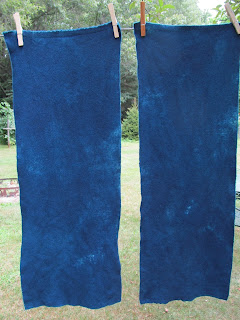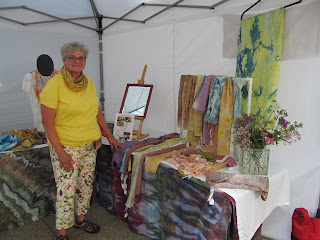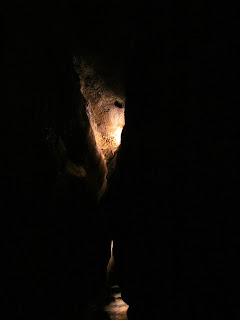
Last week one of the premier quilt shows "American Quilters Society" was here and as always it is the best.
Top quality quilts on display, rows and rows of venders, and numerous classes and lectures. Something for everyone.
This year I took a Sashiko (Japanese hand sewing technique with large needle and thick thread) class from Pepper Cory. I've been wanting to learn the technique.
The stitching has a long history in Japan. In a nut shell, the poor people used this large stitch to layer fabric on their clothes to fix holes and rips. Also they layered clothing to make it warmer. It began as a utilitarian stitch but has since become a highly respected decorative stitch. The old clothing and quilts are known as Boro.
The following pictures were hand stitched by Pepper Cory.

Just like quilt patterns the sashiko stitches have different meanings.
This is a quilt top still in progress.

A completed "moon" wall hanging with sashiko stitching in the lattice strips.

A fun modern version using madras plaid.

This was the teachers class sample. Of course I loved the moons.

This is mine (not sewed together). All my fabrics were from Japan,
wonderful with lots of texture.
Mainly in class I practiced the sashiko stitch, which is very hard for traditional hand quilters. When I learned in the 80's you learned to make teeny, tiny stitches, which I love. It is very hard for me to make stitches the size of rice! I have half rice size stitches. Another very important part is to keep it even between the stitches. So this was just a practice piece, I'm sure the next ones will be much better.

This is another piece of Japanese fabric I bought, didn't have a plan for it just loved it.
Then I saw one of Peppers sashiko stencils with a dragon. Someday this will become a lap quilt.

My class was an all day class with an hour break for lunch, during the lunch hour I went to a lecture by Carol Ziogas from Kimonomomo. She sells Japanese fabrics (where I bought all mine). She has a large collection of vintage Japanese textiles which she brought to show.
Many of these are from the late 1800's to early 1900's, all indigo dyed and hand woven. These are just a few.
The first one is a child's kimono.

A man's with "mon" (family crest) resist dyed.

The front.

A large blanket, you can see the cloth is not very wide.

Hand stitched together and on the back patched.

I love this blanket with the red patch.

This kimono with a squid design resist dyed.

This kimono with a wonderful shibori dyed technique.

A fireman's jacket from the middle 1900's.

They were made from cotton so to make them "fireproof" they were kept soaking in water until needed.

The following are some of her collection of Furoshiki (wrapping cloths).
These were used like our store plastic bags are now used. The island is now so full of old plastic bags a lot of the people have now gone back to using these.
This first one has sashiko stitching in the corner.

This one was dyed with persimmon dyes.

Furoshiki with the family crest,

another.

The real elegant one are called Fukusa, this is a formal gift covering cloth.
After you gave the gift wrapped in this cloth the recipient would give the cloth back.

Notice the ironed folds in the fabric, this was kept so the people would know this was important and not for everyday use. The same for special kimono, they would keep the ironing folds in. Including wedding kimono.

A special furoshiki for tea ceremony.

A wonderful thing Carol (the speaker) did was give everyone a card with fabric samples on it and a paper with Japanese textile words and explanations.
theardentthread.comThis is a link to her web page with more links to order fabric.


































































